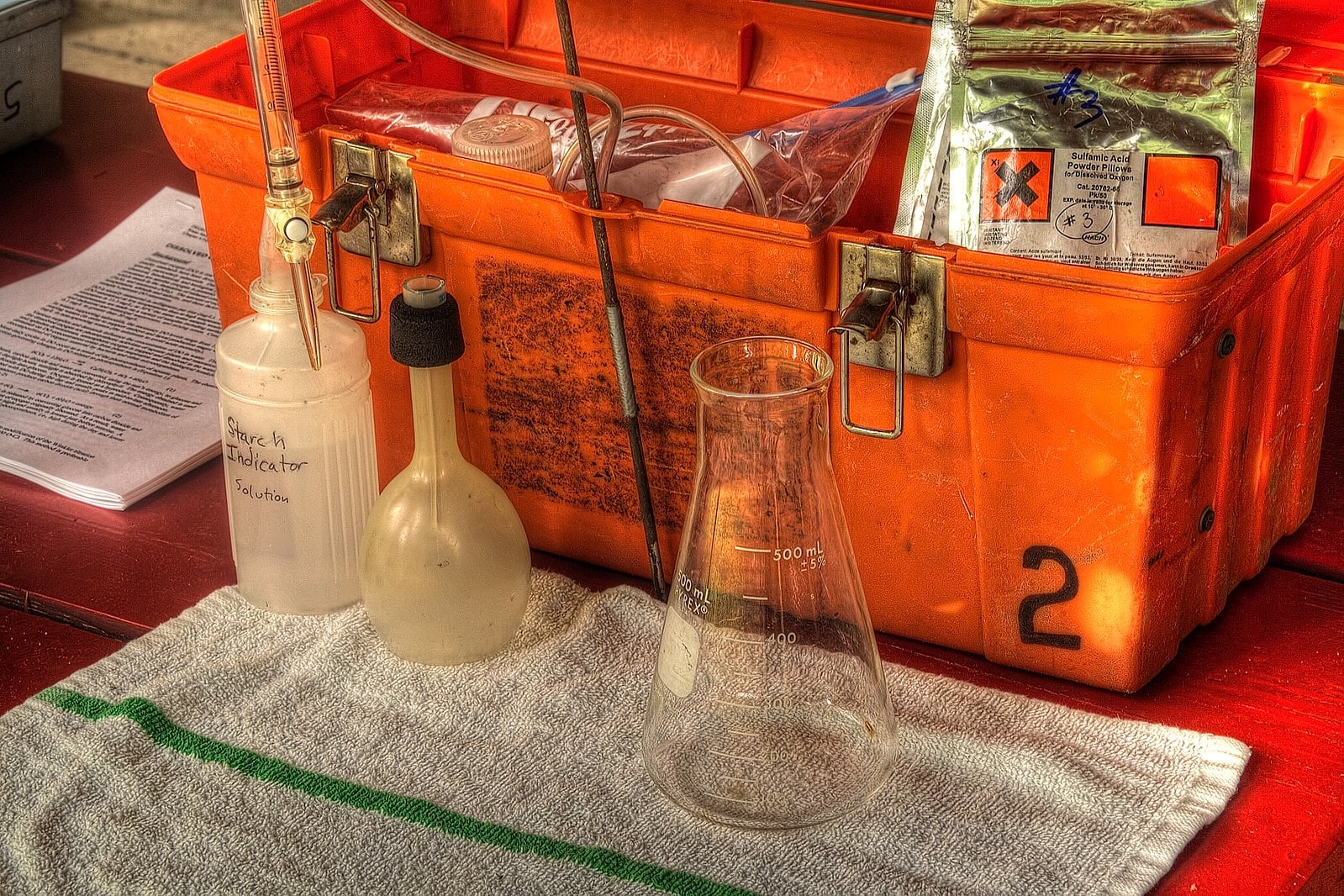Can green energy help heal the St. Lawrence?

‘Testing for Dissolved Oxygen.’ Photo by Glen Bledsoe (Flickr).
Green hydrogen energy production could have another environmental benefit — a steady supply of oxygen that could be added to increasingly hypoxic oceans and waterways.
A growing region of the Gulf of St. Lawrence and the St. Lawrence Estuary is currently under threat from decreased oxygen in subsurface waters, due in part to a climate-related reduction in the supply of oxygen-rich waters to the gulf through the Cabot Strait between Nova Scotia and Newfoundland. This could potentially lead to shifts in species distribution, reductions in fish stocks, and increased greenhouse gas emissions due to unusual algal blooms.
Now, in a new study, researchers from Dalhousie University are suggesting one way to stem the loss would be to actually pump oxygen back into these waters using a by-product of green hydrogen production. They’ve demonstrated that the proposed green hydrogen industry could produce more than enough oxygen regionally to match what is currently being lost from the Gulf of St. Lawrence every year. Typically, oxygen generated in the production of hydrogen would be released into the atmosphere, but this could instead be diverted into the Gulf’s waters to re-oxygenate the marine environment.
Herds of ancient AI caribou lead reasearchers to new archeological sites

The virtual reality of the land bridge was created by computer scientist Bob Reynolds and a group of students at Wayne State University.
(Photo courtesy of John O’Shea, University of Michigan)
In a previous story, Life Before Lake Huron, we recounted how researcher John O’Shea and his team shattered Western science’s view of life in the Great Lakes region during the Mesolithic era. Now, those same researchers are working with computer scientists to create herds of ancient AI caribou to find new archaeological sites and allow modern-day people to explore this ancient virtual landscape.
Archaeological sites sitting at the bottom of Canada’s second-largest lake, Lake Huron, are difficult to sample, and even more difficult to identify. Using sonar, O’Shea and his research team were able to identify a series of stone structures used to bottleneck herds of caribou when hunting. At this site, they recovered a stone tool that originated more than 4,000 kilometres away, indicating that extensive trade networks existed across the continent much earlier than previously thought. However, many similarly rich archaeological sites do not have such salient features literally pointing to their location.
“Underwater research is always like a needle in a haystack. So, any clues you can get that help you narrow down and focus the kind of places you might look at is a real help to us,” said O’Shea.
That’s where artificial intelligence comes in. Facing the dilemma of where to dig next, O’Shea teamed up with Robert Reynolds, professor of computer science at Wayne State University, to use computer modelling in the search for new archaeological sites.
Using this same bathymetric data collected by O’Shea that identified the previous site, the research team is now modelling the topography and land cover of the region and tracking AI caribou across this ancient landscape.
“Because of the slopes, you could simulate the flow of the water. … So we were able to establish, sort of, marshes,” said Reynolds. Once the hydrology of the region was modelled, they were able to work with biologists to populate the model with plants and land cover. “And then what we had to do is to populate the landscape, and we did that by developing a model of caribou.”
From this, the researchers have already been able to identify new sites with significant artifacts that were previously overlooked using traditional sonar techniques.
Cloudy with a chance of climate change
If you’ve spent any time in the Great Lakes region this winter, you’ve likely noticed the dreary shades of grey precluding any chance of catching a glimpse of the sun. In fact, Torontonians suffered a little more than a three-week stretch without seeing the sun at all. Meanwhile, Chicago residents experienced the cloudiest January since 1895, 129 years ago!
The lack of sunlight exposure can negatively affect mental health and well-being and is a known cause of seasonal affective disorder, a form of depression that typically lasts up to 40 per cent of the year.
“People may notice they feel more depressed, have low energy, sleep more, overeat, crave carbohydrates and engage less with others,” says Dr Kia-Rai Prewitt — a Cleveland-based psychologist.
Psychology researchers found that decreased (and decreasing) sunlight during winter months correlates with increased hospital admissions for mood disorders such as depression and bipolar disorder.

Changing ice cover on the Great Lakes over time (NOAA)
Climatologists such as Steve Vavrus and Richard Rood are working to establish connections between the increasing cloud cover and climate change. For instance, “less ice on the Great Lakes should favour more cloudiness, both locally and downstream of the lakes”, says Vavrus. The NOAA Great Lakes Environmental Research Laboratory cites rising temperatures as the main cause for decreased ice cover, with ice cover falling 25% between 1973, when records began, and 2023.
We’re now at a point where climate change is clearly impacting mental health beyond run-of-the-mill climate anxiety. And the speed at which climate change is altering the world as we know it highlights the importance of understanding environmental factors in mental health.
Watershed Wednesdays are our weekly roundup of the insightful, intriguing, important and inspiring news from around the Great Lakes-St. Lawrence watershed.



